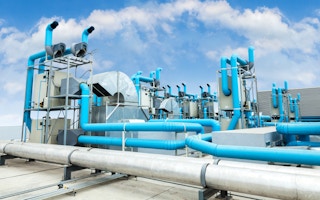When looking for ways to maximize the energy efficiency of a chilled water system, it’s common to pay attention to the chiller itself - and all too common to overlook other opportunities.
To continue reading, subscribe to Eco‑Business.
There's something for everyone. We offer a range of subscription plans.
- Access our stories and receive our Insights Weekly newsletter with the free EB Member plan.
- Unlock unlimited access to our content and archive with EB Circle.
- Publish your content with EB Premium.
Production of chilled water is very important to many facilities as it is the common cooling medium typically used for air conditioning in commercial, institutional, and healthcare facilities. The chiller is the specific piece of equipment that cools water by transferring heat to refrigerant using a vapor-compression cycle. Although the main chiller byproduct is chilled water, it also generates waste heat which needs to be removed to keep the chiller operating effectively.
While small commercial chillers typically utilize localized cooling fans to remediate the waste heat, larger, more efficient chillers often use a condenser water system consisting of cooling towers and pumps to circulate water through the chiller.
So what are some of the most effective chiller plant optimization strategies to make your system as energy efficient as possible?
Traditional solutions
The most widely used optimization strategies involve fitting chillers, cooling towers, and condenser and chilled water pumps with devices that modulate a motor’s electrical frequency to provide only the necessary amount of horsepower. These devices, called variable frequency drives, eliminate wasted energy for reduced loads. While it’s very common to use these devices in some fashion, many people overlook opportunities to use them effectively in order to save money over time.
Controlling costs
For those companies with modern automation and control devices, several optimization strategies are available for implementation in central chilled water plants. These strategies offer significant savings potential, but many organizations simply aren’t aware that they exist.
Condenser Water Temperature Reset
“
For those companies with modern automation and control devices, several optimization strategies are available for implementation in central chilled water plants. These strategies offer significant savings potential, but many organizations simply aren’t aware that they exist.
One of the more recently developed optimization strategies is the modulation of condenser water temperature based on weather conditions. Because chiller efficiency is directly affected by condenser water temperature, cooler condenser water (typically limited to approximately 60º F, or 15ºC) can improve chiller efficiency by as much as 15%. However, this is at the cost of an incremental increase in cooling tower electric usage.
Finding the right balance for cooling tower usage can sometimes be difficult because towers perform differently based on outside weather conditions which are ever-changing. This being said, a properly tuned condenser water temperature reset schedule can offer a significant system efficiency improvement on any given day.
Chiller Loading Optimization
Another opportunity to control costs lies with the chiller itself. Chiller efficiency is not only affected by the condenser water temperature, but also by its operating percentage relative to full peak performance. Generally, chillers operate most efficiently between 60 per cent and 80 per cent of full capacity (chillers operating at less than fifty percent capacity have very poor efficiencies).
The goal of this strategy is to operate multiple chillers at their ideal efficiency points. Implementation of this strategy can help you balance water flow through chillers based on system demand or even operate more chillers than strictly required to reach a given chiller’s optimal load. This opportunity could be counterintuitive for facility managers focusing on simplistic operating strategies; however efficiency improvements are available for those who can handle more complicated sequences.
Exploring free cooling
Finally, for facilities with winter cooling requirements (and in an appropriate geographic area), such as process facilities, data centers, hospitals, college campuses, etc., free cooling may be an available solution. A free cooling system (also called a water-side economizer) can provide significant energy savings by offsetting the need for an electric chiller with a dedicated heat exchanger. This strategy relies on outdoor air temperatures associated with the condenser water system to achieve chilled water temperatures and thus eliminating the need to operate a chiller in cold months.
Though this strategy is not new, it is being more commonly used as datacenters and other information technology spaces are becoming more prevalent in new buildings.
By exploring ways to streamline your chilled water system from every angle, you can not only optimize its efficiency, but also build the solution best suited to the specific environment. As you build or expand your system, keep an eye out for chiller plant optimization strategies that can work for you.
Eric Erpenbeck is is the Manager of Mechanical Engineering and Lead Engineer within the Central Utilities Group at Fosdick and Hilmer.









